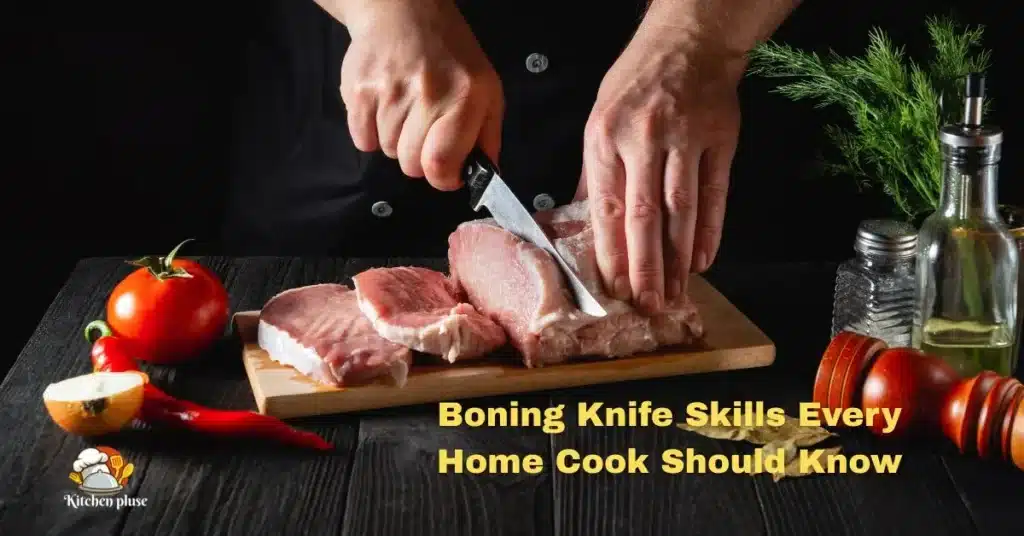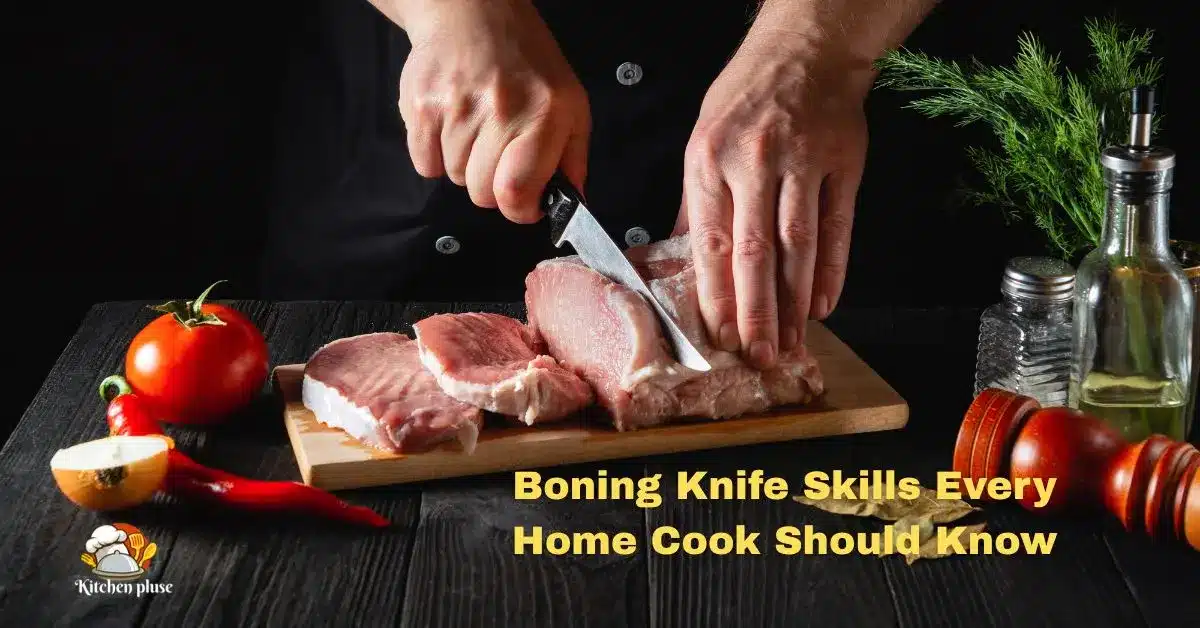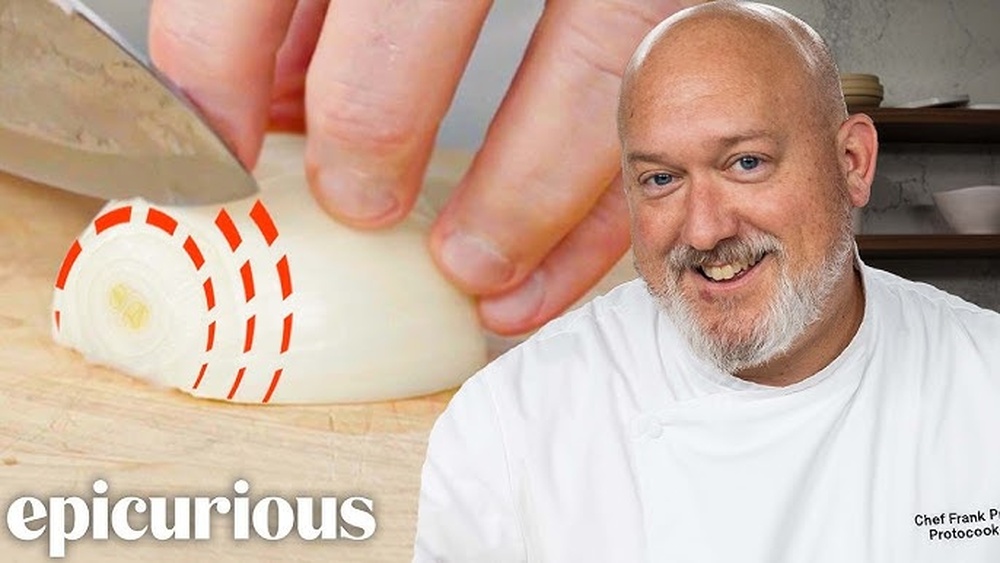Handling knives in your kitchen is something you do every day, but are you really doing it safely? One small slip can turn your cooking session into a painful experience.
That’s why knowing essential knife safety tips isn’t just smart—it’s necessary. You’ll discover simple, practical ways to protect yourself and your loved ones while prepping meals. Whether you’re chopping veggies or slicing bread, these easy-to-follow tips will help you work confidently and prevent accidents.
Keep reading to learn how to turn your kitchen into a safer, more efficient space with just a few smart changes.

Credit: www.youtube.com
Essential Knives For Home Cooks
Every home kitchen needs a few key knives. These knives help with most cooking tasks safely and easily. Choosing the right knives makes food preparation faster and more enjoyable. A good set includes a chef’s knife, a paring knife, and a serrated knife. These three cover chopping, peeling, and slicing well. Adding a few optional knives can help with special tasks. This section explains the essential knives every home cook should have.
Chef’s Knife
The chef’s knife is the most useful knife in the kitchen. It has a broad, sharp blade that is perfect for chopping vegetables and slicing meat. This knife handles many tasks like dicing onions or cutting herbs. It usually measures 8 to 10 inches long. Its weight and balance give control and safety while cutting. Keeping this knife sharp reduces the risk of slips and cuts.
Paring Knife
The paring knife is small and precise. It is designed for detailed work like peeling fruits and trimming vegetables. Its short blade, about 3 to 4 inches, allows for careful control. This knife is perfect for tasks that need accuracy, such as deveining shrimp or removing seeds. Using a paring knife helps avoid accidents when working with small foods.
Serrated Knife
The serrated knife has a jagged edge that cuts through tough surfaces easily. It is often called a bread knife. It slices bread without crushing it. This knife also works well for cutting tomatoes, citrus fruits, and cakes. The serrated blade grips the food’s surface, making slicing safer and cleaner. It should be kept sharp and used only for its intended tasks.
Optional Knife Additions
Some cooks add other knives for more specific needs. A utility knife is smaller than a chef’s knife but bigger than a paring knife. It works well for cutting sandwiches and small meats. A boning knife helps separate meat from bones. A carving knife is good for slicing cooked meats thinly. These optional knives improve efficiency but are not essential for all kitchens.
Knife Handling Techniques
Knife handling techniques are key to safe and efficient cooking. Correct methods reduce accidents and improve control. Learning these basics helps every home cook work with confidence and ease.
Good knife handling protects your fingers and keeps your cuts precise. It starts with how you hold the knife and the way you move it. A steady cutting surface also makes a big difference.
Proper Grip
Hold the knife handle firmly but not too tight. Use your thumb and index finger to pinch the blade’s base. Wrap your other fingers around the handle. This grip gives better control and balance. It also reduces hand fatigue during long chopping sessions.
Safe Cutting Motions
Use a rocking motion to cut. Keep the tip of the knife on the board. Move the blade up and down while pushing it forward. Avoid chopping straight down with force. This motion is safer and more efficient. It helps keep the knife steady and your cuts even.
Using A Stable Surface
Always cut on a flat, stable surface. Use a cutting board that does not slip. Place a damp towel under the board if needed. This prevents the board from moving while you cut. A stable surface helps avoid accidents and allows smoother slicing.
Maintaining Sharpness
Keeping your kitchen knives sharp is key to safe and efficient cooking. Dull knives require more force, which raises the risk of slipping and injuries. Sharp knives cut cleanly, making food prep easier and faster. Learning how to maintain sharpness improves your cooking experience and protects your fingers.
Honing Vs Sharpening
Honing and sharpening are two different ways to care for knives. Honing straightens the blade’s edge without removing metal. Sharpening grinds the blade to create a new edge by removing metal. Both are important but serve different purposes in knife maintenance.
Using A Honing Steel
A honing steel helps keep your knife edge aligned. Hold the steel vertically and slide the knife blade down at a 20-degree angle. Repeat on both sides about five to ten times. Use honing steel regularly to maintain sharpness between sharpenings.
When To Sharpen
Sharpen your knives when honing no longer improves their cutting. Signs include difficulty slicing, slipping, or crushed food. Use a whetstone, electric sharpener, or professional service. Regular sharpening keeps your knives safe and effective for all cooking tasks.
Safe Storage Practices
Storing knives safely is important to protect both the blades and your fingers. Proper storage keeps knives sharp and ready to use. It also prevents accidents by keeping blades out of reach of children and pets. A good storage system organizes your knives and saves space in the kitchen.
Knife Blocks And Magnetic Strips
Knife blocks hold knives upright and keep blades separated. This prevents dulling and damage. Choose a block with slots that fit your knives securely. Clean blocks regularly to avoid bacteria buildup.
Magnetic strips are mounted on walls for easy access. They keep knives visible and off the counter. Make sure the magnets are strong to hold knives safely. Place the strip high enough to stay out of children’s reach.
Avoiding Drawer Clutter
Keeping knives loose in drawers is dangerous. Blades can get nicked and hands can get cut. Use drawer inserts or trays to separate knives from other utensils. This keeps knives stable and protects their edges.
Organized drawers make it faster to find the right knife. Avoid piling knives on top of each other. This prevents accidents and extends the life of your knives.
Washing And Carrying Knives Safely
Proper washing and carrying of knives prevent accidents and keep blades sharp. Handling knives with care ensures safety in every kitchen task. Clean and transport knives correctly to avoid injuries and blade damage.
Hand Washing Tips
Always wash knives by hand immediately after use. Use warm water and mild dish soap for cleaning. Hold the knife handle firmly and wipe the blade from the spine, not the cutting edge. Avoid soaking knives in water to prevent rust. Dry knives thoroughly with a clean towel before storing.
Avoiding Dishwasher Damage
Do not put knives in the dishwasher. The heat and detergent dull the blade quickly. Knives can also bump against other utensils, causing nicks or chips. Dishwasher cycles may loosen knife handles over time. Hand wash knives to keep them sharp and intact.
Proper Carrying Methods
Carry knives with the blade pointing down and away from your body. Hold the handle firmly to avoid slips. Keep fingers clear of the blade edge. Use a knife sheath or blade guard when walking with a knife. Always pass knives handle-first to others for safety.

Credit: kitchenpluse.com
Common Knife Safety Mistakes
Knife safety is crucial for every home cook. Many accidents happen due to simple mistakes. Recognizing common knife safety errors helps prevent injuries. These errors often come from habits developed over time. Changing these habits leads to safer kitchen work. Understanding these mistakes is the first step to better knife handling.
Using The Wrong Knife
Choosing the wrong knife makes cutting tasks unsafe. A large knife on small items can slip easily. Using a serrated knife to chop vegetables is risky. Each knife type has a specific use. Match the knife to the food for better control. This reduces the chance of accidents.
Cutting Towards Yourself
Cutting towards your body increases injury risk. If the knife slips, it can cut your hand or fingers. Always cut away from yourself to stay safe. This simple habit protects your skin from harm. Make it a rule every time you use a knife.
Neglecting Sharpness
Dull knives cause more accidents than sharp ones. A blunt blade requires more force, which leads to slips. Sharp knives cut smoothly and need less pressure. Regularly sharpening your knives keeps them safe and efficient. Check your knives often and sharpen them as needed.
Specialized Knives And Their Uses
Specialized knives help home cooks work safely and efficiently. Each knife has a unique shape and size. These features make certain kitchen jobs easier. Using the right knife reduces accidents and improves cutting precision.
Utility Knife Tasks
The utility knife is smaller than a chef’s knife. It works well for slicing fruits and vegetables. It also helps cut sandwiches and small meats. This knife is good for jobs that need more control. Using it correctly keeps hands safe from slips.
Boning Knife Benefits
Boning knives have thin, flexible blades. They help remove bones from meat and fish. The blade’s shape allows careful cutting near bones. This prevents wasting meat or damaging it. Using a boning knife with focus lowers the risk of injury.

Credit: kitchenpluse.com
Frequently Asked Questions
What Are The 5 Knife Safety Rules?
1. Always use a sharp knife to reduce slipping risks. 2. Cut on a stable, non-slip surface. 3. Hold the knife properly with a secure grip. 4. Carry knives with blades pointing downwards. 5. Wash knives carefully, avoiding direct hand contact with blades.
What Are 5 Important Things To Remember When Holding A Knife?
Hold the knife firmly with a secure grip. Keep fingers curled away from the blade. Cut on a stable surface. Always point the blade downward when carrying. Maintain sharpness to ensure safe, precise cutting.
What Is The Golden Rule For Knives?
The golden rule for knives is to always handle them carefully, keep blades sharp, and cut on a stable surface.
What Knives Should A Home Cook Have?
A home cook should have a chef’s knife for chopping, a paring knife for detailed tasks, and a serrated knife for slicing bread and soft-skinned foods. These three knives cover most kitchen needs efficiently.
Conclusion
Knife safety is key to a happy kitchen experience. Always use the right knife for each task. Keep your knives sharp to cut smoothly and safely. Never rush while cutting; stay focused and steady. Store knives carefully to avoid accidents.
Wash them by hand, handling blades with care. Practice these simple tips every time you cook. Safe knife habits protect you and your loved ones. Cooking becomes easier and more enjoyable with safety in mind. Remember, careful knife use leads to better meals and fewer injuries.

